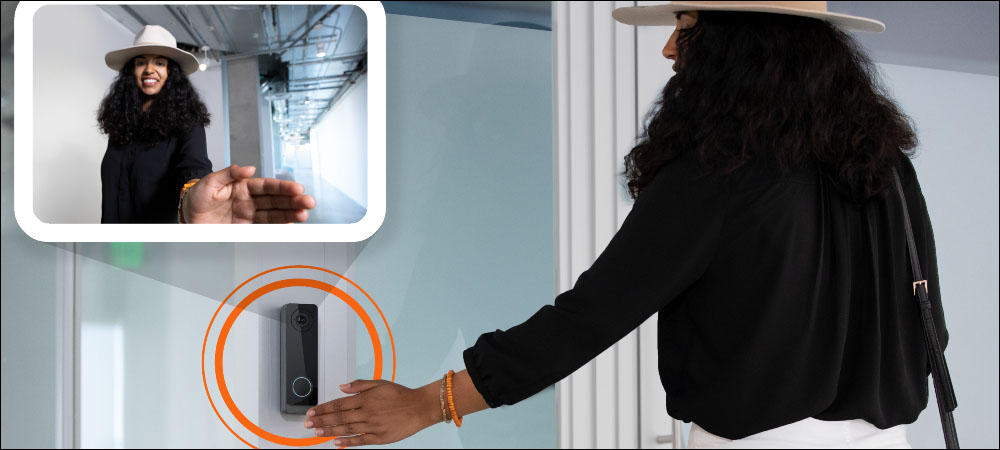Public-safety systems are there to give people more peace of mind and help them feel secure in their environments. In order to successfully mitigate risk and help people feel safe, public-safety systems need to be reliable, accessible and efficient. The best way to achieve this? The right technology.
 A recent global research study led by Motorola Solutions and Goldsmiths, University of London, surveyed 12,000 citizens and interviewed 50 public-safety agencies, as well as businesses and industry experts, to better understand how the pandemic changed the public’s view on safety. The report found 71 percent of people agree that advanced technologies, such as video cameras, data analytics, cybersecurity and the cloud, are needed to address the challenges of the modern world.
A recent global research study led by Motorola Solutions and Goldsmiths, University of London, surveyed 12,000 citizens and interviewed 50 public-safety agencies, as well as businesses and industry experts, to better understand how the pandemic changed the public’s view on safety. The report found 71 percent of people agree that advanced technologies, such as video cameras, data analytics, cybersecurity and the cloud, are needed to address the challenges of the modern world.
What are today’s biggest public-safety and security challenges? The global pandemic heightened awareness around safety in public spaces, and led to a greater focus on providing essential services in new and innovative ways. Today’s security and safety systems must be able to provide accurate information and facilitate faster responses.
Better Emergency Response
During any emergency situation, clear communication is necessary across teams and systems. Voice communication systems, like radio, remain the best way to keep first-responders informed during critical situations. Recent advancements in radio communications are now making it possible to automate operations for improved emergency responses.
New technology has the ability to create and send instant communications tied to alarms, emergency calls and responder locations. With centralized communication dashboards and interoperable radio systems, first-responder teams are more informed. Plus, radio technology is more reliable than ever. With better connectivity and automated call routing, first-responder teams can improve in-field situational awareness and ensure nobody misses important communications when it matters most.

In the public sector, using all the security and safety systems together allows first-responders to assess situations quickly and provide accurate responses. In addition to communications platforms, internal security and dispatch teams can now utilize real-time video feeds, access logs and alarm-management tools to better understand the key elements of specific incidents.
For example, a video-enabled reader like the Openpath Video Reader Pro shows real-time feeds of an access event, with the ability to trigger a remote lockdown and contact onsite personnel to facilitate appropriate measures with no time wasted. Armed with a better understanding of each unique space and its risks, government and public-sector security administrators can partner with local first-responder teams to plan and implement better response strategies and improve security posturing.
Advanced Physical Security Systems
New developments in access control are also giving organizations more flexibility in how they control and limit access to their facilities. One of the key innovations that has recently proven to be vital to operational security is remote access. Being able to access the building data and controls from anywhere is crucial for a more flexible workforce. Remote access is achieved with fully cloud-based access-control systems, or via browser and Web-based applications that allow VPN access for on-premise systems.
Mobile capabilities have also made their way into the security mainstream, allowing people to use their smartphones to unlock doors instead of key cards or fobs. Alongside mobile-enabled access, many public-sector buildings are opting into touchless solutions to facilitate contactless entry for greater peace of mind and convenience.
Public-sector and government building access control is unique, in that there are often areas that are open to the public, as well as interior spaces that need high-level security. Today’s public-sector access-control systems should have the following features:
- Door schedules to automatically lock exterior and lobby doors after hours, and to keep them unlocked during regular business hours. In the case of holidays or other closures, door schedules need to be easily adjusted on the fly.
- Flexible permissions to allow customizable access privileges to specific individuals, and the ability to easily issue or revoke a user’s credentials instantly.
- Digital visitor-access credentials that don’t require a badge or key card. This feature streamlines the process for reserving space in a library, or to accommodate vendors, contractors or other guests to municipal buildings.
- Video-enabled readers to enhance security with visual verification. A reader like the Openpath Video Reader Pro automatically associates video footage with access, alerts and motion, all observable remotely through the Control Center or app for convenience and improved response.
Interoperability is essential for today’s security landscape. Alarm systems, video security, and access control should all work together to improve safety and security. As part of a holistic system, these platforms can provide a more complete picture of what’s happening, and thus inform better decision making.
Leveraging AI for Improved Building Security
More connected platforms mean higher volumes of data that are increasingly difficult for organizations to manage. One benefit of AI-powered analytics is that they can help process that data faster and make an operator aware of areas that require attention to mitigate risk. This is especially useful for law-enforcement building security or enterprise-level organizations with multiple locations, buildings or spaces, or any organization with high-security areas.
A video security platform that utilizes AI, for example, can call attention to anomalous behavior or activity, allowing security teams to triage incidents faster and take the appropriate action. In a government building setting, such as a city hall or courthouse that is open to the public with different types of spaces and access levels (think jury rooms, meeting spaces, courtrooms, cafés and offices), AI-powered video analytics can help security teams know where to place their focus. If something seems off, the system can notify an operator, and security can then assess whether the incident requires a response, as well as what type of response is appropriate.
Building Safer Communities with Technology
Deploying advanced technologies to protect the public sector is a necessary step toward a safer community. As systems become more connected and interdependent, it’s paramount that cybersecurity also comes into play as part of a holistic security strategy. Organizations and businesses must ensure responsible use of these advanced technologies, following best practices including:
- Establishing trust through transparency surrounding how, when and why technology is used
- Educating the public on the technologies and maintain open lines of communication
- Constantly evaluating the systems in place for vulnerabilities, and addressing any potential gaps or shortcomings immediately
- Understanding that the technologies are a tool to help inform incident responses, but proper planning and training are still required
By connecting advanced technologies and security platforms, organizations are empowered with the information needed to make better decisions, faster. As security technology continues to get smarter, a wide variety of industries can reap the benefits of investing in future-proof technologies now, in order to build a more proactive strategy for today’s security landscape.


